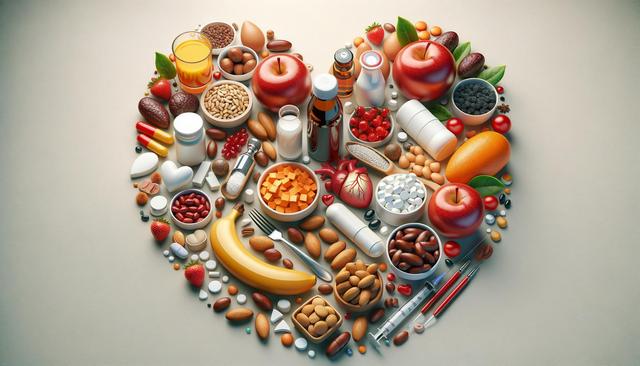What Is Bad Cholesterol and Why It Matters
Understanding cholesterol begins with knowing the difference between LDL and HDL. LDL, or low-density lipoprotein, is commonly referred to as “bad cholesterol” because high levels of it can lead to plaque buildup in the arteries. HDL, or high-density lipoprotein, is known as “good cholesterol” because it helps remove excess cholesterol from the bloodstream. The difference between LDL and HDL is fundamental in evaluating cardiovascular risk.
So, what is bad cholesterol exactly? LDL carries cholesterol to the arteries, where it can accumulate and form hardened deposits. These deposits narrow the arteries and increase the risk of heart attack or stroke. Keeping LDL levels in check is essential, especially when paired with a healthy HDL level that helps clear cholesterol from the body.
There are no immediate symptoms of high cholesterol, which is why it’s often referred to as a silent condition. Regular check-ups can help identify high cholesterol levels early and allow for timely intervention.
Cholesterol Levels by Age and Risk Factors
Cholesterol levels naturally change as we age, and what’s considered healthy can vary depending on your age group. Understanding cholesterol levels by age helps in recognizing when intervention may be necessary. For example:
- Children and teens: Total cholesterol should be under 170 mg/dL.
- Adults aged 20–39: Total cholesterol should be under 200 mg/dL.
- Adults aged 40 and older: Target levels remain under 200 mg/dL, but HDL and LDL ratios become more critical.
Risk factors for high cholesterol include a diet high in saturated and trans fats, lack of physical activity, smoking, and genetic predisposition. Monitoring these factors alongside age-related benchmarks allows for a more personalized approach to cholesterol management.
Routine lipid panel tests are recommended at least every five years for adults, and more frequently for those with risk factors. Detecting changes early can prevent severe cardiovascular issues later on.
Diet and Foods That Impact Cholesterol
Nutrition plays a significant role in either raising or lowering cholesterol levels. Knowing the 4 foods that raise LDL cholesterol can help guide dietary choices. These include:
- Processed meats like sausages and bacon
- Full-fat dairy products
- Fried foods
- Baked goods made with hydrogenated oils
On the other hand, the best diet for high cholesterol includes heart-friendly foods such as:
- Oats and whole grains
- Fruits high in soluble fiber, like apples and oranges
- Fatty fish rich in omega-3 fatty acids
- Legumes and nuts
Making small but consistent dietary changes can significantly affect cholesterol levels. Replacing saturated fats with healthier fats, like those found in avocados and olive oil, is another effective strategy.
How to Lower Cholesterol Naturally
For those looking to avoid or minimize medication, learning how to lower cholesterol naturally is a practical and effective approach. Lifestyle changes are often the first recommendation by healthcare providers. Common strategies include:
- Increasing physical activity, such as brisk walking or cycling for 30 minutes a day
- Adopting a diet high in fiber and low in saturated fats
- Reducing alcohol consumption
- Quitting smoking
Weight management also plays a critical role. Even a modest weight loss of 5–10% can lead to measurable improvements in cholesterol levels. Additionally, stress reduction through mindfulness or yoga can indirectly support heart health.
While natural approaches can be highly effective, they require consistency and commitment. Regular monitoring ensures that these efforts are making a measurable impact over time.
Recognizing the Symptoms and Knowing When to Act
Although high cholesterol typically does not present with obvious symptoms, certain warning signs may appear when cholesterol levels have already caused damage. These include:
- Chest pain or angina
- Shortness of breath
- Fatigue during physical activity
- Small yellowish deposits of cholesterol under the skin (xanthomas)
These symptoms of high cholesterol often indicate more serious underlying conditions, such as coronary artery disease. If any of these signs are present, it’s important to consult a healthcare provider right away.
Preventive care remains the most effective strategy. Regular blood tests, especially if you have a family history of heart disease, can help catch high cholesterol early. Early detection paired with lifestyle changes or prescribed treatments can significantly reduce the risk of complications.




Leave a Reply